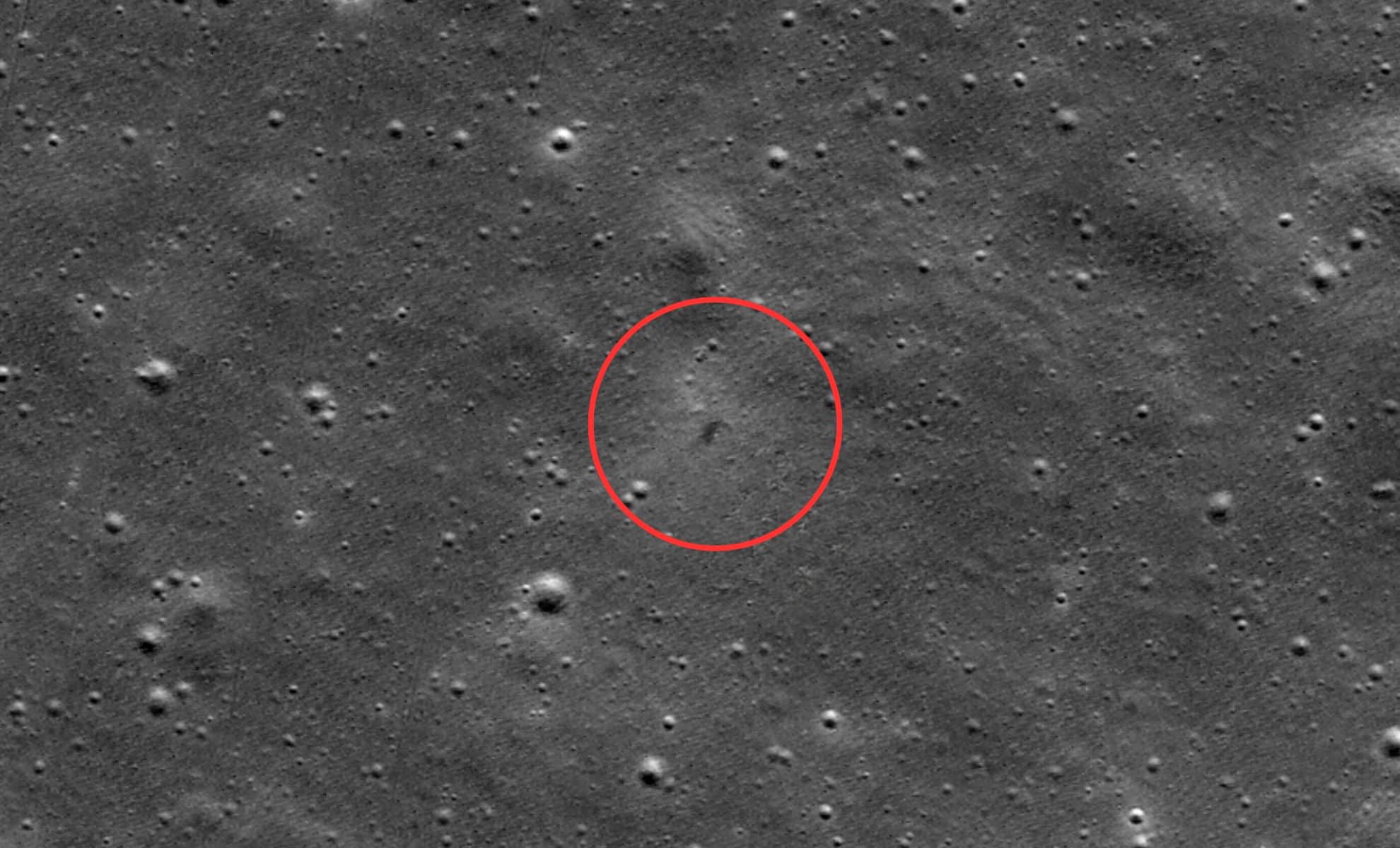
A Strange Mark Just Appeared on the Moon — NASA Satellite Captures Startling Lunar Disruption
How did your country report this? Share your view in the comments.
Diverging Reports Breakdown
A Strange Mark Just Appeared on the Moon — NASA Satellite Captures Startling Lunar Disruption
NASA’s Lunar Reconnaissance Orbiter captured a dramatic view of the Hakuto-R Mission 2 impact site on the Moon’s surface, revealing fresh scarring on the lunar terrain. The images, published by NASA, offer a striking confirmation that ispace’s RESILIENCE lander, part of a private Japanese mission, crash-landed in Mare Frigoris, a geologically intriguing volcanic plain. This marks the second unsuccessful attempt by ispace to softly land on the moon. The photos show a noticeable dark patch surrounded by a lighter, halo-like ring. This contrast was caused by lunar regolith, the Moon’s fine dust and rocky debris, being hurled outward and scouring the surrounding area. The size and pattern of the ejecta suggest a high-velocity collision. The dark spot and ejected regolith surrounding the crash site will likely remain visible for decades, serving as both a cautionary symbol and a research target.
A Mission Called RESILIENCE Ends in Impact
The SMBC x Hakuto-R Moon lander, codenamed RESILIENCE, launched on January 15, 2025, aboard a privately funded spacecraft. It represented a key step in Japan’s ambitions to establish a commercial lunar presence. Despite its name, the lander experienced a “hard landing” on June 5, falling short of its planned touchdown. NASA’s LRO Narrow Angle Camera detected the crash aftermath from 50 miles above, capturing a darkened surface smudge — the signature of a recent impact.
The photos show a noticeable dark patch surrounded by a lighter, halo-like ring. This contrast was caused by lunar regolith, the Moon’s fine dust and rocky debris, being hurled outward and scouring the surrounding area. The size and pattern of the ejecta suggest a high-velocity collision. These images not only help confirm the lander’s fate but also offer insight into the mechanics of impacts on airless planetary bodies.
RESILIENCE lunar lander impact site, as seen by NASA’s Lunar Reconnaissance Orbiter Camera (LROC) on June 11, 2025. The lander created a dark smudge surrounded by a subtle bright halo.
Credit: NASA/Goddard/Arizona State University.
LRO’s Role in Documenting Lunar History
Launched in 2009, the Lunar Reconnaissance Orbiter has become one of NASA’s most enduring assets in lunar science. Managed by NASA’s Goddard Space Flight Center, LRO carries a suite of seven instruments, including the LROC (Lunar Reconnaissance Orbiter Camera) system, which has revolutionized how we observe the Moon. Its high-resolution images have recorded everything from Apollo landing sites to geological formations and failed lander impacts, making it essential for lunar mission planning.
By documenting the site of RESILIENCE’s crash, LRO continues to support not only scientific analysis but also commercial accountability, offering public and private partners an impartial record of lunar surface events. Each new impact site tells a story — of ambition, risk, and technological limits — and contributes to the broader knowledge base guiding future exploration.
Mare Frigoris: A Telling Backdrop for the Impact
The crash occurred in Mare Frigoris, a relatively flat expanse north of the Moon’s equator, historically significant and geologically active. This region is intersected by wrinkle ridges, fault-like structures caused by the Moon’s slow cooling and contraction. These natural features are of high interest to planetary geologists, and a fresh impact in such a terrain adds a new variable for scientific modeling.
The placement of the impact in this zone offers an opportunity to study how recent mechanical disruptions affect pre-existing tectonic features. The dark spot and ejected regolith surrounding the crash site will likely remain visible for decades, serving as both a cautionary symbol and a research target.
A Setback for ispace, but Not the End
This crash marks ispace’s second consecutive failure to land softly on the Moon. While the previous Hakuto-R Mission 1 in 2023 also ended in an impact, the company continues to emphasize long-term objectives in space logistics and lunar resource development. These setbacks underscore the difficulty of Moon landings — a feat achieved by only a handful of state-sponsored programs.
Still, each attempt contributes valuable telemetry and mission data that feed into the design of subsequent efforts. As NASA expands partnerships with private companies through programs like CLPS (Commercial Lunar Payload Services), incidents like this one will become more common — and so will the learning curve.
Source: https://dailygalaxy.com/2025/06/a-strange-mark-just-appeared-on-the-moon/
